Tales of Destruction and Rebirth:
The Trojan Horse
The events of the Trojan War (c. 1300-1200 BC) are depicted in numerous works of Greek art. After ten years of siege, the end of this conflict came with a ruse: a giant hollow wooden horse was filled with thirty warriors led by Odysseus. When the Trojans discovered that the Greeks were apparently gone, leaving behind them this “gift to Athena,” they believed that the war was over, and they joyfully dragged the horse inside their walls. At midnight, the soldiers from inside the horse emerged, opened the gates to the army, and sacked the city. There has been speculation that the “wooden horse of Troy” may have been a siege machine. In any case, the tale was made hugely popular by Virgil’s Aeneid, and by innumerable pictures and films. In addition, the Trojan horse has become a common metaphor for political tactics of infiltration, and the name of a destructive computer application.
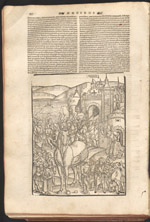 |
Opera Virgiliana. Lyon: Crespin, 1529. [zoom] The two hundred images in this edition were designed in Strasbourg in 1502, and then reprinted and imitated for almost a century. It seems that publishers like Crespin were mostly concerned with the pedagogical value and narrative quality of the images. |
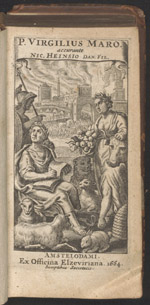 |
[Works of Virgil]. Amsterdam: Elsevier, 1664. [zoom] The fame of the Elsevier family of Dutch booksellers, publishers, and printers, rests chiefly on their pocket-sized editions of the classics, including Virgil. These handy volumes would enter the houses of many middle-class families, just as the wooden horse depicted in this “commercial” frontispiece image entered the city of Troy. |
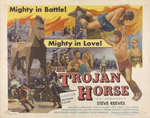 |
Poster for the American Version of La Guerra di Troia, 1961. [zoom] Directed by Giorgio Ferroni (1908-1981), La Guerra di Troia is a highly regarded example of the sword and sandal or “peplum” genre that flourished in the 1950s and 1960s. Released in the USA with the title “The Trojan Horse,” this masterwork of epic fantasy and kitsch was well funded, which permitted the construction of a full size wooden horse. |
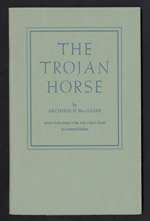 |
Archibald MacLeish. The Trojan Horse: A Play. Boston: Houghton Mifflin, 1952. [zoom] This verse drama was first presented on the BBC in 1952. Paul Brooks, in a note accompanying the first edition, tied the play to the McCarthy era, with its irrational fear of communist infiltration. In 1939, when President Roosevelt decided to appoint MacLeish as Librarian of Congress, right-wing politicians protested that he was an undercover “red” intellectual. The same accusation was made against him when he was appointed Assistant Secretary of State for cultural and public affairs in November 1944, though MacLeish publicly said that the US government should protect the American people from the fascist and the communist threats alike. This limited edition is inscribed to Cornell English Professor Arthur Mizener. |
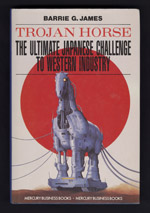 |
Barrie G. James. The Trojan Horse: the Ultimate Japanese Challenge to Western Industry. London: Mercury Business Books, 1990. [zoom] The author of the best-selling Business Wargames (1984), Barrie James worried about the growing numbers of Japanese automated assembly plants in Western Europe and America in the 1980s. To make his point, he used the alarmist metaphor of the Trojan horse: “Japanese assembly plants are likely to become powerful Trojan Horses… Subsidized with Western taxpayers’ money, using Japanese-made equipment to assemble components created, designed and developed in Japan, [they threaten our sovereignty]… A time bomb [is] ticking away at the heart of the West’s industrial competitiveness, and time is running out.” The cover’s design reinforces the sense of menace and urgency. |